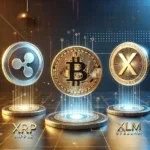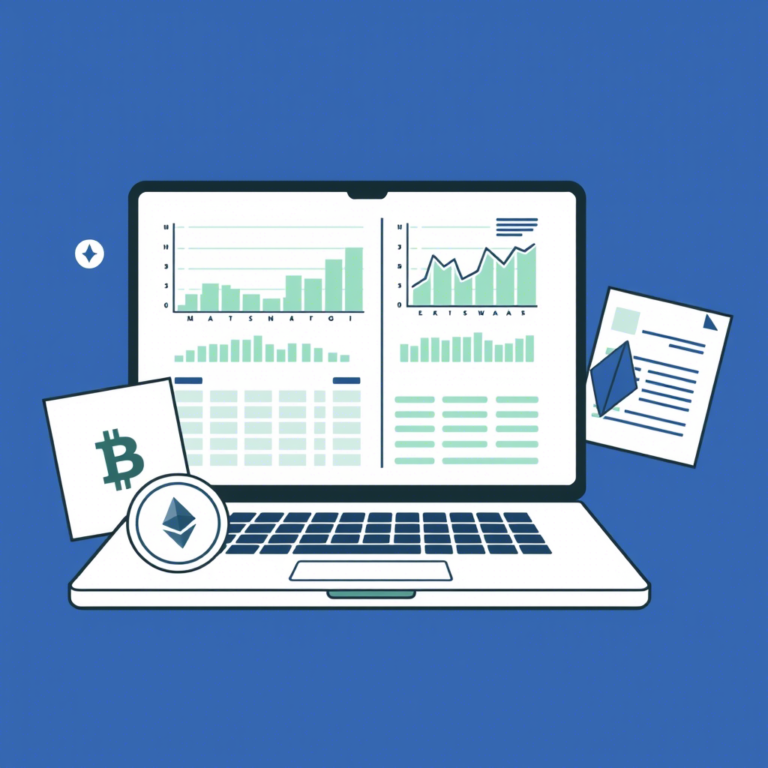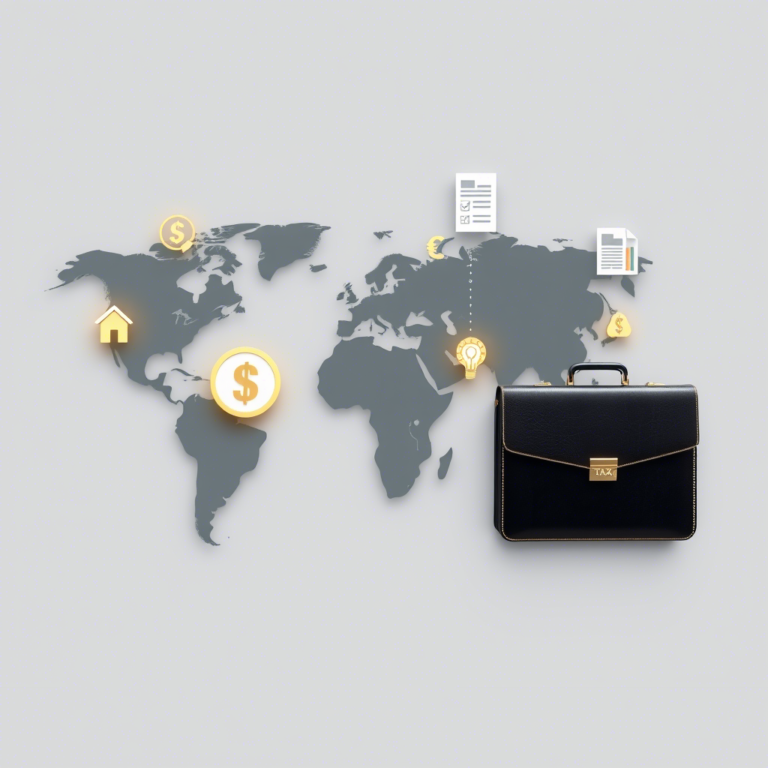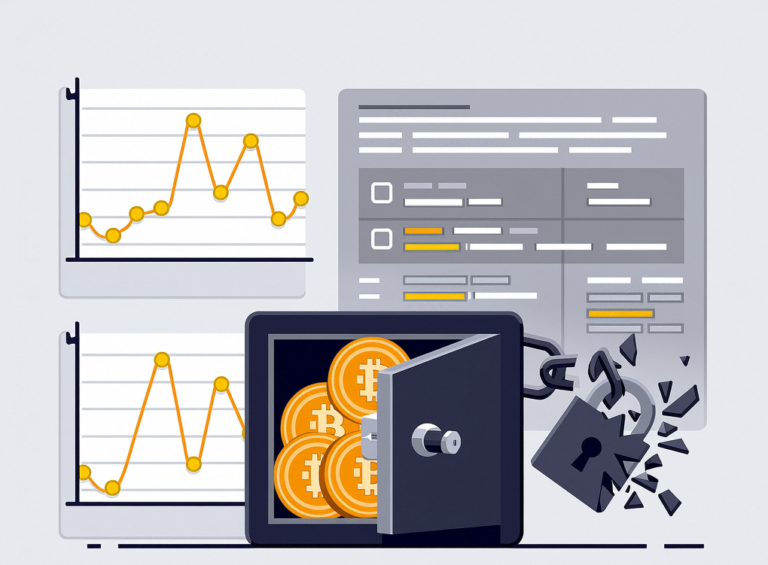Decentralized applications (dApps) are transforming how we interact with digital services by removing centralized control and fostering trustless, peer-to-peer operations. Powered by smart contracts on blockchains like Ethereum, dApps range from decentralized finance protocols to gaming and social media platforms. Unlike traditional apps hosted on central servers, dApps run on distributed networks, offering censorship resistance, transparency, and user-owned data.
Introduction
Decentralized applications (dApps) represent a major shift from traditional, centrally controlled apps. Rather than relying on a single server or corporate operator, dApps use blockchain networks (often Ethereum, Binance Smart Chain, or Solana) and smart contracts to automate rules, ownership, and data flow. By distributing data and logic across many nodes, dApps aim to reduce single points of failure, censorship, or manipulation.
In this article, we’ll explore what dApps are, how they differ from conventional software, the benefits and challenges of building them, and real-world use cases spanning finance, gaming, supply chains, and more. Whether you’re a curious newcomer or a developer intrigued by blockchain technology, you’ll learn how dApps combine peer-to-peer networking with self-executing code to reshape digital services.
Defining Decentralized Applications
A dApp is an application whose backend logic runs on a decentralized network, typically powered by blockchain or distributed ledger technology. The front end or user interface may be a conventional mobile or web interface, but the core operations—data storage, transaction validation, user authentication—reside in a trustless, peer-managed environment.
Key Aspects of a dApp
- Open Source (often): Users can audit the code, verifying how the dApp behaves.
- No Central Server: Instead, data replicates across nodes in the network.
- Smart Contracts: Define the app’s “business logic” on-chain, ensuring unbiased execution.
- Incentive Models: Many dApps incorporate tokens to reward participants, encourage staking, or govern protocol changes.
Key Features of dApps
Decentralized Data and Logic
- Rather than storing everything on a single server, the application relies on replicated data across multiple nodes.
Cryptographic Security
- Transactions or state updates use cryptographic signatures, preventing unauthorized changes.
- Each action typically references a “gas” fee or similar mechanism to deter spam.
Immutable Records
- Data added to the underlying blockchain (e.g., a token transfer, a DeFi loan) is extremely difficult to alter retroactively.
- Encourages transparency and reliability.
Peer-to-Peer Interaction
- Participants connect directly or via a distributed ledger, removing reliance on a central broker.
Tokenization
- Many dApps use tokens to govern or facilitate economic activity within the system. Examples: UNI for Uniswap governance, SUSHI in SushiSwap yield farming, etc.
Benefits Over Traditional Apps
Censorship Resistance
- No single authority can ban or remove a user or transaction if it follows the network’s consensus rules.
- Especially important in finance (e.g., cross-border payments) or free speech contexts.
User Ownership
- Instead of logging into a company’s server, users connect with their own wallet addresses, controlling private keys and digital assets.
Trust Minimization
- Smart contracts define the rules. Users rely on code, not a central operator’s integrity.
- Reduces the need for escrow or multi-party “sign-offs.”
Open Collaboration
- Often open source, so developers can build on or fork existing dApps, fueling rapid innovation.
- Ecosystems like Ethereum thrive on “money lego” composability, where different protocols integrate seamlessly.
Global Accessibility
- Anyone with internet can interact, no specific geographic or banking restrictions, bridging unbanked populations.
Challenges and Limitations
Scalability
- Public blockchains can process relatively few transactions per second, leading to high fees under congestion.
- Layer-2 solutions or sidechains mitigate this, but adopting them can fragment user bases.
User Experience Complexity
- Managing private keys, bridging tokens between networks, paying gas fees—these steps can deter mainstream users who expect simpler signups.
Security Risks
- Smart contract bugs, rug pulls, phishing sites. A single code vulnerability can cost millions in a matter of hours.
Partial Centralization
- Many dApps still rely on centralized front-ends (web hosting) or admin keys for upgrades. This undermines the ideal of fully unstoppable code if devs can forcibly change or shut down the system.
Regulatory Uncertainty
- Governments question how to apply AML, securities, or data privacy laws to unstoppable, global protocols.
- Some dApps block IP addresses from restricted regions, arguably reintroducing partial centralization.
Popular dApp Platforms
Ethereum
- Home to thousands of dApps. Innovations like DeFi, NFT marketplaces, DAOs.
- Primary language: Solidity; limited throughput with higher gas fees.
Binance Smart Chain (BSC)
- EVM-compatible, faster blocks, lower fees.
- Ecosystem includes PancakeSwap, Venus, often called “Ethereum clones” but with more centralization.
Solana
- High-performance chain focusing on speed and scalability.
- dApps revolve around NFTs, DeFi, and gaming. Some trade-offs in decentralization or robust node distribution.
Polygon
- Layer-2 scaling solution for Ethereum. Low-cost, fast confirmations, bridging mainstream dApp usage with reduced fees.
EOS, TRON
- DPoS-based chains with faster transactions, though perceived as more centralized in block producer selection.
Use Cases Across Industries
Finance/DeFi
- Decentralized exchanges (Uniswap), lending (Aave, Compound), stablecoins (DAI, USDC bridging).
- Removes bank overhead, letting global users earn interest or access credit.
NFT Marketplaces and Gaming
- Platforms like OpenSea, Rarible for digital art, NFT-based collectibles.
- Blockchain games like Axie Infinity or Gala Games letting players truly own in-game assets as NFTs.
Social Media and Content
- Decentralized social networks (Lens Protocol, Mastodon servers) resisting single-platform censorship.
- Creators can directly monetize via tipping, NFT-based subscriptions, or tokenized communities.
Supply Chain
- Permissioned dApps (Hyperledger Fabric or private Ethereum) used by logistics companies for multi-party data sharing.
- Food safety tracking (IBM Food Trust).
Identity and DAO Governance
- dApps enabling self-sovereign IDs.
- DAOs for project management, membership, or philanthropic efforts.
How dApps Are Developed
Choosing a Blockchain
- Ethereum remains the top choice for robust DeFi/NFT ecosystems, though you might pick BSC, Solana, or Polygon for lower fees.
Coding Smart Contracts
- Languages: Solidity (Ethereum, BSC, Polygon), Vyper (alternative on Ethereum), Rust (Solana).
- Tools: Truffle, Hardhat, or Remix for compilation/testing.
Testing and Audits
- Local or testnet deployment first. Reputable audit firms help catch vulnerabilities.
- Bug bounties encourage community to find and report issues.
Deployment
- Publish the compiled bytecode to the blockchain, paying gas. The network assigns the contract an address.
- Substantial changes post-deployment typically require new contracts or an upgradeable proxy pattern (with governance).
Frontend Integration
- DApp UIs use libraries like web3.js or ethers.js to read/write contract data.
- Host front-end on IPFS or a standard server, letting users connect wallets (MetaMask, Trust Wallet) for transactions.
Security Considerations
Smart Contract Vulnerabilities
- Reentrancy, integer overflows, improperly guarded admin functions. Thorough audits remain crucial.
- Use well-reviewed libraries (OpenZeppelin) for standard token or access control logic.
Front-End Phishing
- Hackers replicate the dApp website domain with slight misspellings or subdomains. Always verify official URLs.
User Education
- Encourage users to confirm transaction details in their wallet pop-ups, avoiding accidental approvals or infinite spend allowances.
Admin Keys and Governance
- If devs hold a single admin key, they can theoretically upgrade or freeze the contract. Multi-sig or DAO-based approvals reduce single points of compromise.
Oracle Risks
- Some dApps rely on off-chain data (prices, events). If the oracle is manipulated, the contract’s outcome can be maliciously guided.
Governance in Decentralized Apps
DAOs and Voting
- Token Governance: Many dApps issue governance tokens letting holders propose/vote on protocol upgrades or fee changes.
- Decentralized Control: Minimizes the risk of a single dev or team unilaterally making decisions.
Challenges
- Whale Influence: Large token holders can dominate votes.
- Low Participation: Voter apathy leads to a few users shaping proposals. Tools like delegation or quadratic voting can address these issues.
Example
- MakerDAO: MKR token holders govern interest rates for the DAI stablecoin. Vital decisions about risk parameters rely on decentralized voting processes.

Future Outlook of dApps
Scalability Solutions
- Layer-2 rollups, zero-knowledge proofs, sidechains. As fees drop, dApps can handle mass adoption.
- Cross-chain bridging fosters interoperability, letting tokens or data flow between networks (e.g., Polkadot, Cosmos).
Better UX
- Abstracting away gas fees, providing passwordless logins, or social recovery methods for private keys.
- Vital for bridging mainstream user expectations.
Institutional Involvement
- Corporations or banks exploring private or hybrid dApps (consortium blockchains) for efficiency, compliance, or new revenue streams.
Multi-Chain Ecosystems
- Developers may deploy the same dApp across multiple blockchains, each optimized for certain user demographics or transaction volumes.
DAO Evolution
- More sophisticated on-chain governance; advanced voting strategies ensuring robust community decision-making.
Conclusion
Decentralized applications (dApps) transcend conventional app models by harnessing blockchain’s distributed ledger and smart contracts to deliver trust-minimized, user-owned platforms. From finance (DeFi) and gaming (NFTs) to supply chain and social media, dApps remove central servers, reduce single points of failure, and encourage permissionless innovation. However, they’re not without obstacles: high gas fees, scalability constraints, complex UX, and potential security pitfalls remain major concerns.
Despite these challenges, the growth of layer-2 solutions, cross-chain protocols, and user-friendly development frameworks suggests a future where dApps become as seamless as today’s web apps—but with the added advantages of global accessibility, transparency, and community-driven governance. As blockchain infrastructures mature, decentralized applications stand poised to reshape digital interactions, giving individuals more control over their assets, data, and online experiences.
Keep Up to Date With Us
Discover the world of our news. Post your article so that it will be featured in our magazine.
Additional Resources
Ethereum
ethereum.org/en/dapps – Browse examples of dApps on the leading smart contract platform.Binance Smart Chain
www.bnbchain.org – EVM-compatible chain with lower fees, popular among DeFi dApps and NFT marketplaces.Solana
solana.com – High-throughput blockchain used by many gaming/NFT dApps, leveraging Rust-based smart contracts.Truffle Suite
trufflesuite.com – Development environment for Ethereum-based contracts, simplifying build, test, and deployment.OpenZeppelin
docs.openzeppelin.com – Audited libraries and reusable components for secure dApp construction (token standards, governance modules).DeFi Llama or DappRadar
defillama.com – dappradar.com – Track top dApps by TVL (Total Value Locked) or user activity across multiple chains.








